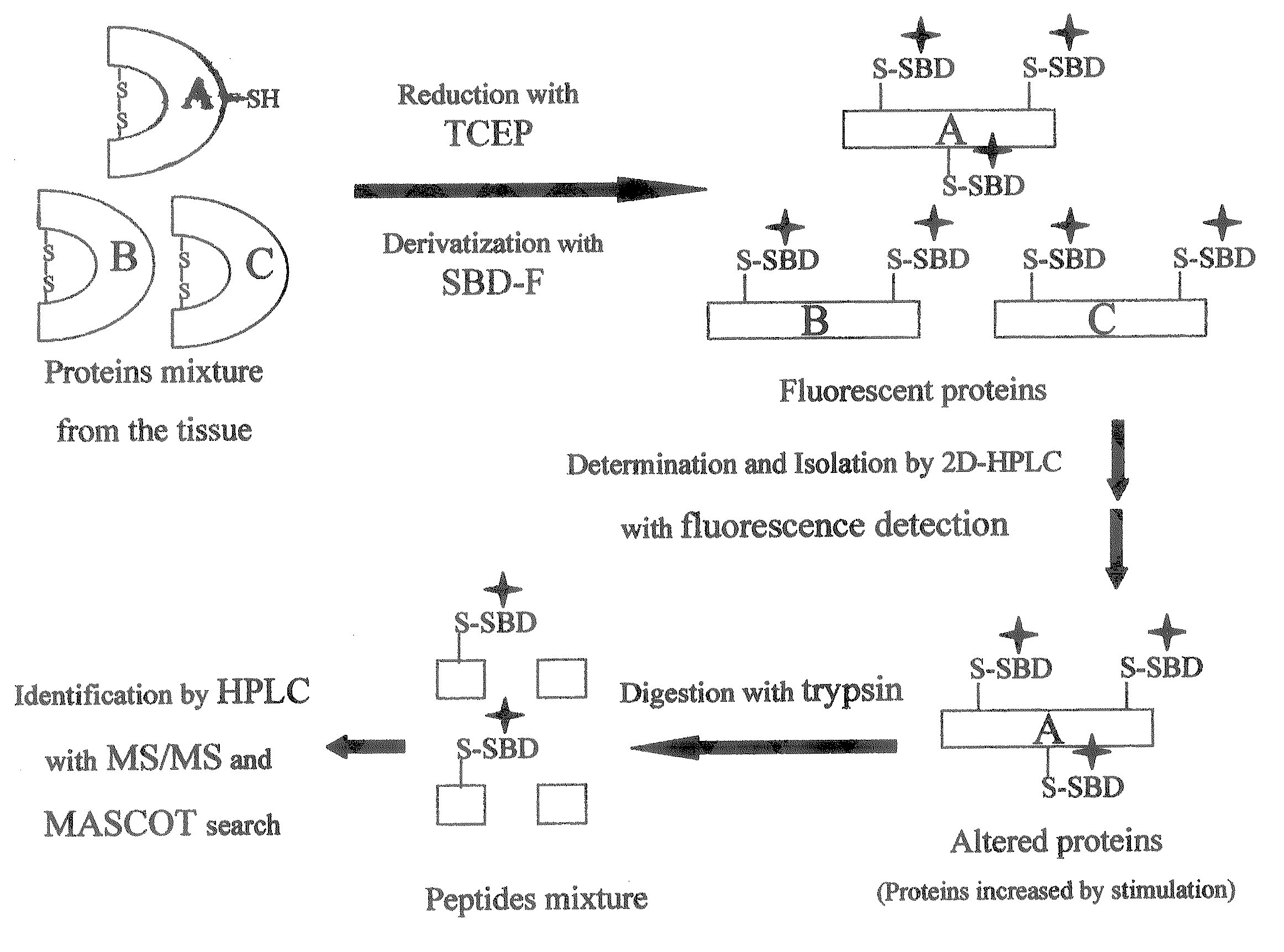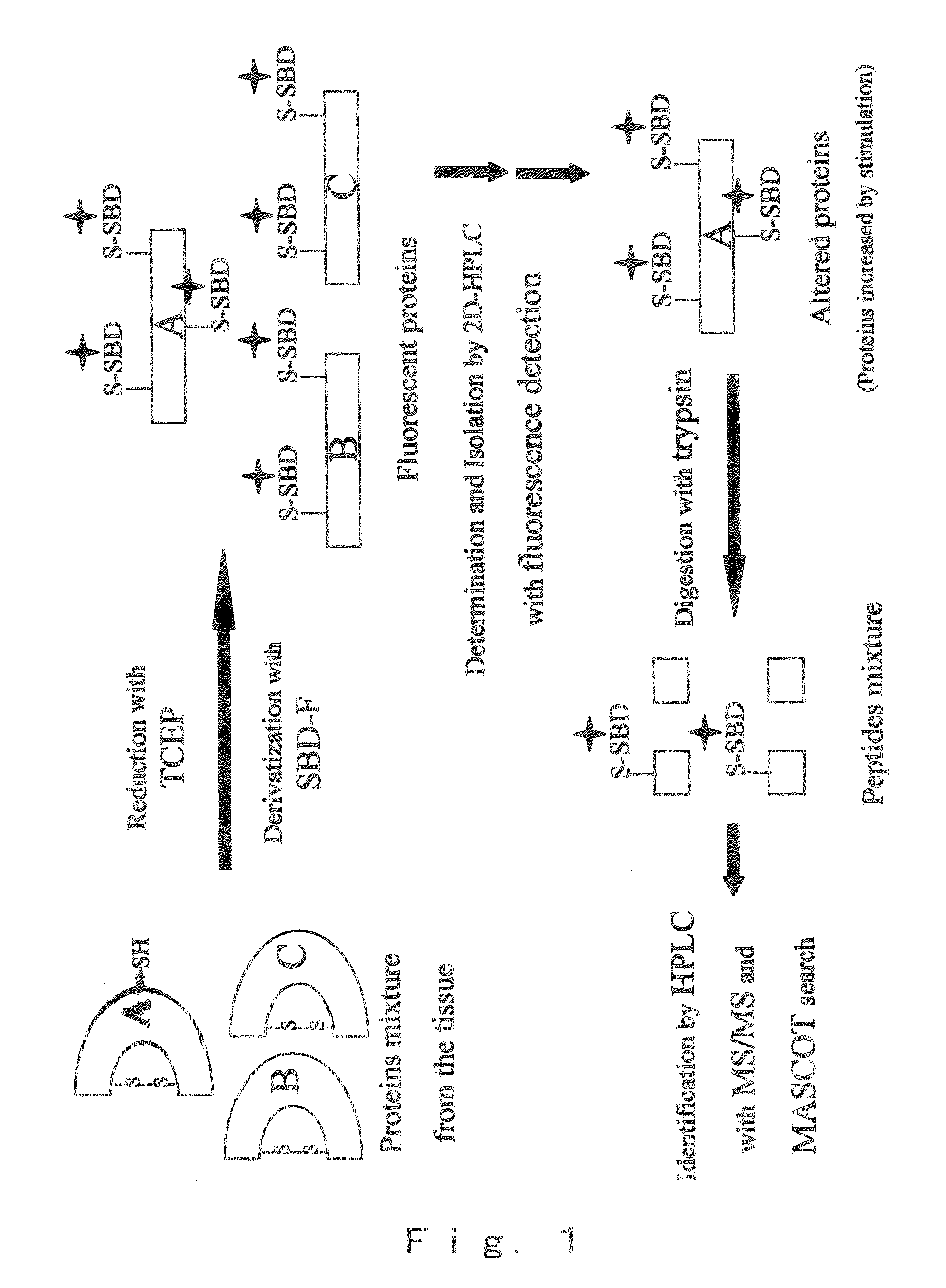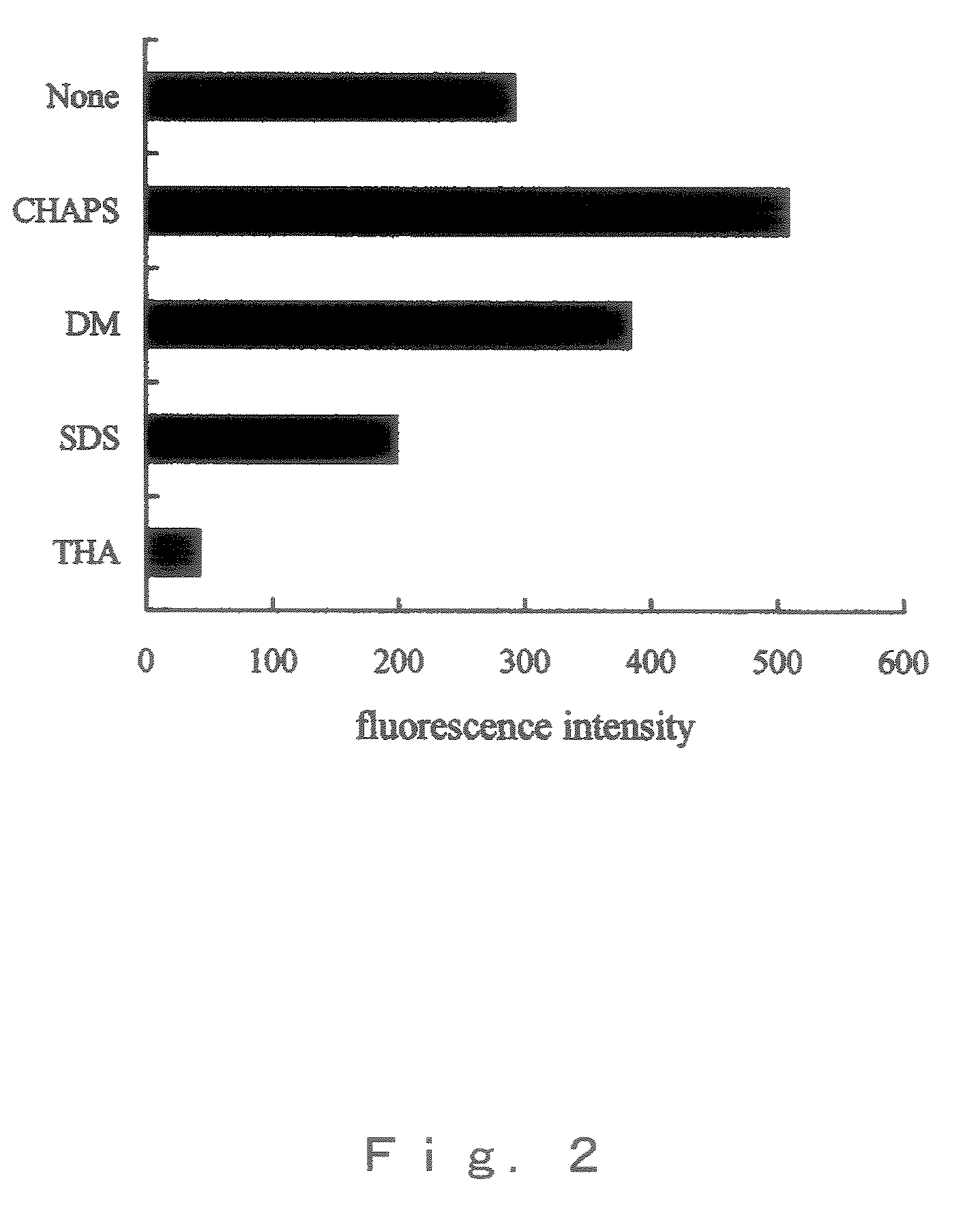Method of detection, separation and identification for expressed trace protein/peptide
a technology of expressed protein and trace amount, applied in the field of detection, separation and identification of trace amount of expressed protein and/or peptide, to achieve the effect of easy and simultaneous comparison, easy and accurate quantification, and easy quantification of trace protein
- Summary
- Abstract
- Description
- Claims
- Application Information
AI Technical Summary
Benefits of technology
Problems solved by technology
Method used
Image
Examples
example 1
Separation and Identification of Proteins / Peptides Containing Thiol Islets of Langerhans in Rat Pancreatic Tissues
(1) Derivatization of Proteins / Peptides Containing Thiol in Islets of Langerhans
[0047]The islets of Langerhans were solubilized by adding 50 μl of a 6 M guanidine chloride dissolved in 0.1 M boric acid buffer (pH9.0), and 50 μl of each 17.5 mM TCEP, 17.5 mM SBD-F, 10 mM EDTA and 50 mM CHAPS dissolved in 6 M guanidine chloride solution were added thereto respectively, and were mixed. The mixture was reacted at 40° C. for 3 hr to derivatize them.
(2) Primary Separation Using Ion Exchange HPLC
[0048]The above reaction solution was subjected to ion exchange column, and fluorescence proteins / peptides were eluted by NaCl gradient (0, 0.04, 0.08, 0.12 and 0.3 M) to separate 5 fractions. The detection of fluorescence proteins / peptides was performed by fluorescence of SBD skeleton. HPLC conditions are shown below.
(HPLC Conditions)
[0049]Column: TSKgel DEAE-5PW 7.5×75 mm (Toso)[0050]...
example 2
[0082]The derivatized BSA with SBD-F was digested with trypsin by the process as depicted in FIG. 1, the resulting peptides mixture was separated by reversed phase liquid chromatography (RPLC), and detected by fluorescence detector. Then, each peptide was subjected MS / MS analysis by ESI mass spectromometer. Theoretically, by trypsin digestion, BSA should generate 25 Cys-containing peptides and 35 non-Cys-containing peptides of more than 4 amino acid residue. In the present Example, more than 27 fluorescent peptides were detected fluorometically so that the quantitative derivatization has been performed (FIG. 4, A).
[0083]Eleven Cys-containing peptides and 17 non-Cys-containing peptide were detected in the mass chromatogram (FIG. 4, B). FIG. 5 shows the tandem mass spectrum derived by collision-induced dissociation (CID) of the (M+2H)2+ precursor, m / z=873.4 (marked with an arrow in FIG. 4).
[0084]Database-searching with MASCOT, which adopts probability-based protein identification algo...
example 3
[0085]The applicability of the method was tested for rat pancreas with or without dexamethasone (Dex) administration.
[0086]Dex induces type 2 diabetes, a predominant type in human diabetes, through the increase in the hepatic glucose production and induction of insulin resistance. Actually, at 24 h after the Dex treatment, the blood glucose levels reached 209.8 mg / dL, which were significantly above the pretreatment value of 118.3 mg / dL (p<0.05). In the present Example, islet of Langerhans (around 60 islets) were collected from the rat pancreas treated with or without Dex for two days and derivated with SBD-F. An important aspect for the application of the method to biological samples is the isolation of a target protein(s) by HPLC from the protein mixture. In the present Example, the fluorescent proteins were first separated via ion exchange chromatography (IEC) on the basis of varieties of negative changes generated by SBD-F and amino acids moieties.
[0087]IEC was performed with the...
PUM
| Property | Measurement | Unit |
|---|---|---|
| excitation wavelength | aaaaa | aaaaa |
| excitation wavelength | aaaaa | aaaaa |
| excitation wavelength | aaaaa | aaaaa |
Abstract
Description
Claims
Application Information
 Login to View More
Login to View More - R&D
- Intellectual Property
- Life Sciences
- Materials
- Tech Scout
- Unparalleled Data Quality
- Higher Quality Content
- 60% Fewer Hallucinations
Browse by: Latest US Patents, China's latest patents, Technical Efficacy Thesaurus, Application Domain, Technology Topic, Popular Technical Reports.
© 2025 PatSnap. All rights reserved.Legal|Privacy policy|Modern Slavery Act Transparency Statement|Sitemap|About US| Contact US: help@patsnap.com



